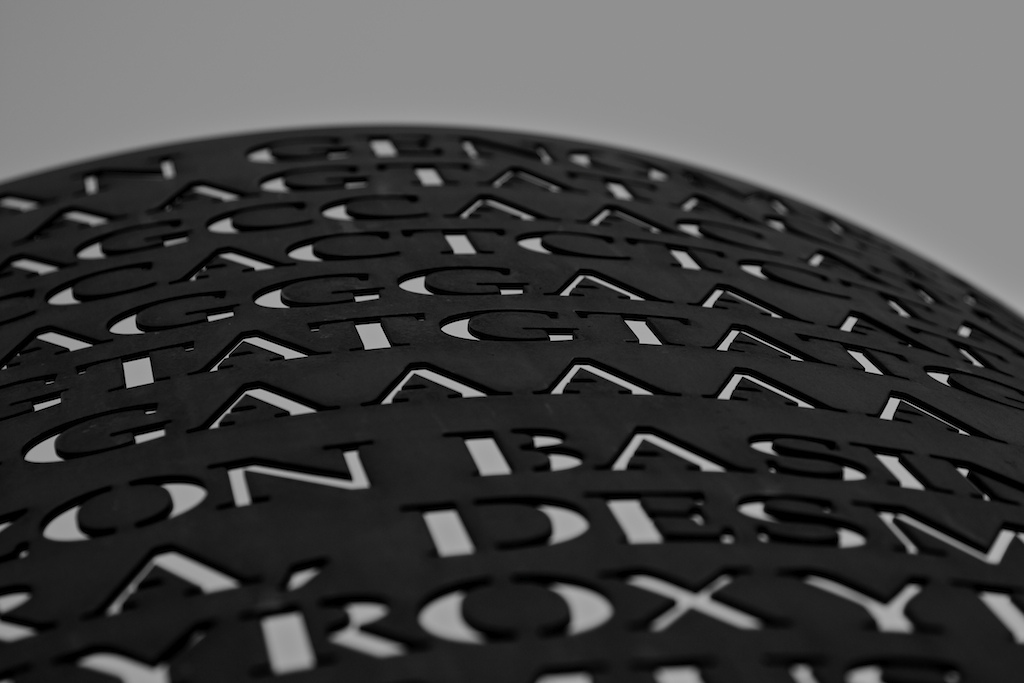 Maths, Physics & Chemistry
Maths, Physics & Chemistry
A new code for a new life

Life on our planet is based on DNA. DNA is a big molecule present in all organisms, and it contains the instructions to build each of life's components. It is the biological way to store and spread information. It is the universal language of life on Earth.
DNA's language is composed of four different letters called nucleic acids or bases: adenine (A), thymine (T), cytosine (C) and guanine (G). All together they form a sequence that can be read and translated by living cells into 20 different amino acids (the building blocks of proteins), which, in turn, can be assembled into functional and structural proteins. This is the basis of all the living things we know.
Since the beginning of life on Earth, DNA is multiplied within cells and transmitted from generation to generation, but the code has always been composed of the four bases A, T, C and G. In the 3-dimensional structure of the DNA molecule, these bases are always associated into "base pairs": an "A" on one strand always pairs with a "T" on the other strand, and a "C" with a "G".
For a long time, scientists have been trying to extend this alphabet in order to store more information, to create new biological forms, or to understand if other kinds of life that use another DNA alphabet can exist (whether on Earth or elsewhere).
In 2008, a research team published the discovery and the description of new potential base pairs that had been chemically synthesized. One of these unnatural base pairs (UBPs) was selected for further study: d5SICS and dNaM. This pair was chosen because the researchers observed that d5SICS and dNaM were compatible with the natural mechanisms of DNA replication (a crucial step for the reproduction of living beings) and can also be transformed into an intermediate between DNA and proteins, the RNA.
But all those reactions were made in the laboratory, in glass tubes. The real challenge would now be to bring these new letters of the DNA alphabet into a living organism, and see if the organism can replicate them.
The first problem is that these UBPs are not readily available within cells. For this study, Romesberg's team genetically modified a strain of Escherichia coli, a bacteria commonly found in the human gut, to enable it to transport the new bases from the growth medium into the cell. They did this by engineering these bacteria to have a gene from a single cell algae (Phaedactylum tricornutum). The inserted gene enabled the modified Escherichia coli to transport the new bases from the medium into cells. Using this mutant organism and radioactive labelling of the UBPs (a common technique for visualizing molecules), the team observed that the new nucleotides were successfully transported from the growth media into the cells.
Romesberg's team then produced a small circular piece of DNA, called a plasmid, and inserted the new base pair in a known position of its sequence. After that, this new plasmid, called pINF, was inserted into the modified Escherichia coli strain engineered with the base-uptake gene. They let the bacteria grow during 15h hours on a special medium enriched with UBPs and then they checked if the bacteria had produced copies of pING. They did this by verifying whether the number of copies of pINF had increased, and the plasmid had been multiplied 20,000,000-fold! Finally, they used a technique called liquid chromatography to see if the copies of pINF plasmids contained the UBPs, and they detected a lot of them!
These results mean that Romesberg's team successfully multiplied a new type of life's language in cells, marking the beginning of a new field in biological research.
This technique will now be developed to tag and follow some DNA replication processes. However, in the future we may be able to create a completely new language, encoding for new amino acids and, who knows, build new proteins. It is a huge challenge, but this could be the starting point of a new life form made by humans. This could allow us to create products/molecules we need, using organisms as direct producers, and help us to imagine some other life systems that could exist somewhere else in our universe.
Original Article:
Malyshev D, Dhami K, Lavergne T et al. A semi-synthetic organism with an expanded genetic alphabet. Nature. 2014;509(7500):385-388. doi:10.1038/nature13314.Next read: Lego blocks for precise gene editing by Jared Carlson-Stevermer
Edited by:
Dr. Carlos Javier Rivera-Rivera , Managing Editor
We thought you might like
GMOs are not a human invention: sweet potato is a naturally transgenic food crop
Jul 6, 2015 in Plant Biology | 3 min read by Tina KyndtAmoebas trap bacteria using nets of DNA: the same mechanism as human immune cells
Jan 27, 2017 in Evolution & Behaviour | 3.5 min read by Lukáš NovákWhat happens to our genes in the twilight of death?
Feb 28, 2017 in Health & Physiology | 3.5 min read by Peter Noble , Alex PozhitkovHuman gut parasite has a sinister use for its stolen genes
May 18, 2017 in Evolution & Behaviour | 3 min read by Lukáš NovákMore from Maths, Physics & Chemistry
Testing gravity through the distortion of time
Sep 20, 2024 in Maths, Physics & Chemistry | 3 min read by Sveva CastelloStacking molecular chips in multiple dimensions
Aug 30, 2024 in Maths, Physics & Chemistry | 3 min read by Lucía Gallego , Romain Jamagne , Michel RickhausReversible Anticoagulants: Inspired by Nature, Designed for Safety
Jun 12, 2024 in Maths, Physics & Chemistry | 4 min read by Millicent Dockerill , Nicolas WinssingerDistance-preserving moves always keep a point fixed
May 18, 2024 in Maths, Physics & Chemistry | 4 min read by Shaula FiorelliA resonance triggers chemical reactions between the coldest molecules
Apr 5, 2024 in Maths, Physics & Chemistry | 3 min read by Juliana Park , Wonyl ChoiEditor's picks
Trending now
Popular topics


